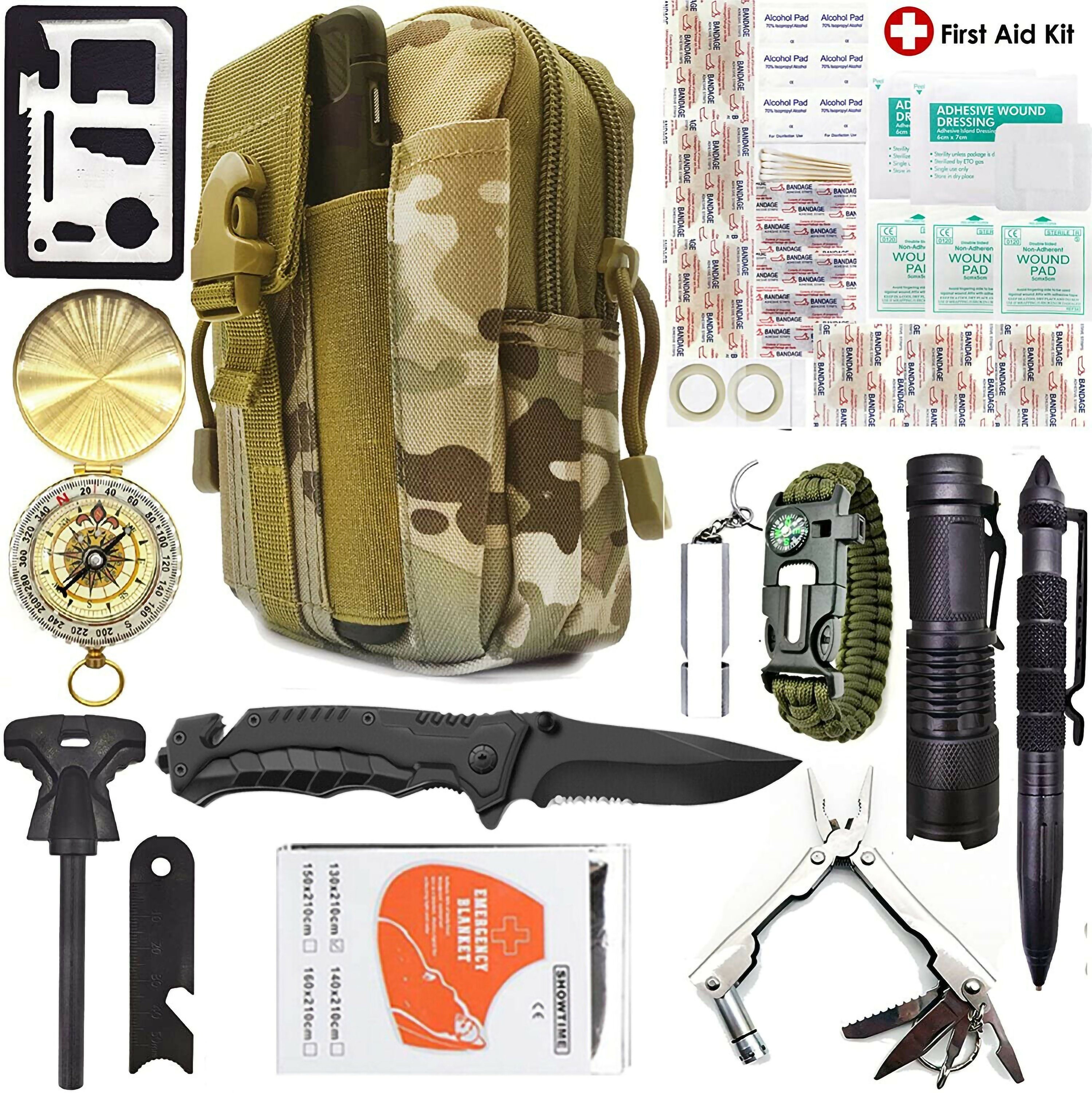Starting a backpacking adventure is an exciting way to immerse yourself in nature and explore the great outdoors. Nevertheless, with that excitement comes the need of being equipped for any situation that may arise during your journey. If you are venturing into the wilderness for a one-day hike or preparing for an multi-day outdoor expedition, having the appropriate survival gear is crucial to secure your safety and well-being.
In this ultimate guide, we will explore into the essential items you need to pack for your hiking journey. From selecting the right survival backpack and knife to understanding what food and water supplies are sustainable, we will discuss everything you need to know. We will also analyze how to pick lightweight gear for convenient transport, discover high-quality shelters, and choose the best tools for crisis situations. With the correct preparation and knowledge, you can assuredly navigate the trails and savor your adventure to the fullest.
Choosing the Right Survival Equipment
Selecting the right survival gear is vital for securing safety and preparedness during your hiking journeys. Begin by considering your individual needs based on the type of your trip. Take into account factors such as the timeframe of your hike, the setting you will be traversing, and your personal skill level. For instance, a day hike in a local forest will require different gear unlike a multi-day trek in a remote wilderness area. Tailoring your gear to your unique circumstances can make all the difference in a survival context.
When it comes to essential items, emphasize functionality and versatility. https://stevens-cramer.blogbright.net/the-best-survival-equipment-for-the-best-outdoor-adventure should fulfill multiple purposes, allowing you to minimize weight while maximizing utility. Look for multi-tools that offer various functionalities, compact cooking kits, and lightweight, weather-resistant gear. It is essential to choose equipment that can withstand the conditions you might face, whether that involves severe weather, rough terrain, or limited resources. Quality over quantity should direct your selection process, concentrating on items that are long-lasting and reliable.

In addition to the type of gear, think about the overall design and weight. Lightweight and compact gear not only eases the burden on your back but also increases your agility. Look for gear that you can comfortably carry over long distances, as well as items that won’t take up too much space in your backpack. Check for qualities like usability, storage solutions, and compatibility with other gear. Ultimately, the right survival gear will equip you to respond adequately to the issues you may encounter on your hiking journey.
Crucial Items for Your Preparedness Pack
When assembling your survival kit, it's important to focus on necessary items that can help maintain and protect you in difficult circumstances. A trustworthy survival knife should be your primary choice. survival store serves several functions, whether for trimming rope, preparing food, or building shelter. Look for a knife that is tough, convenient to handle, and has a fixed blade for maximum strength in important tasks.
Next, hydration is vital for success. Include a reliable water filter in your kit to ensure you have availability to safe drinking water. This could be a portable filter or tablets, both of which can clean natural water supplies. Don't forget to bring water holding containers that are easy to carry and convenient to carry, allowing you to transport water safely during your journeys.
Finally, a flame-igniting tool is crucial for warmth, cooking, and signaling for help. Choose a dependable method such as weatherproof matches, a flint striker, or a firestarter kit. These tools not only provide heat and light but also boost morale in crisis situations. Collectively, these components form the core of your emergency pack, ensuring you are more prepared for unexpected difficulties in the wild.
Special Considerations for Various Settings
When getting ready for a hike, the surroundings significantly affects the survival gear you should choose. In this content , desert areas, prioritize hydration systems, such as durable water bladders and water filters, as access to water can be scarce. A wide-brimmed hat and sunblock are crucial for protecting yourself from the intense sun. Choosing lightweight clothing that dries quickly can also enhance comfort and prevent overheating.
In contrast, if your hike takes you through dense forests or mountainous terrains, focus on gear that improves navigation and visibility. A reliable multi-tool can help with multiple tasks, while a portable and efficient survival shelter can provide protection from unexpected rain or wind. Additionally, consider packing a reliable whistle to signal for help in case of urgent situations, as sound travels more effectively in dense underbrush.
For those venturing into colder environments, such as wintry terrains, insulation and protection from the elements become paramount. Invest in a high-quality sleeping bag designed for low temperatures and a weather-resistant backpack to keep your supplies dry. Materials for starting a fire are crucial in these settings; ensure they are within reach to quickly heat up or prepare meals. Dressing in layers will help manage body temperature, so plan your packing accordingly.
